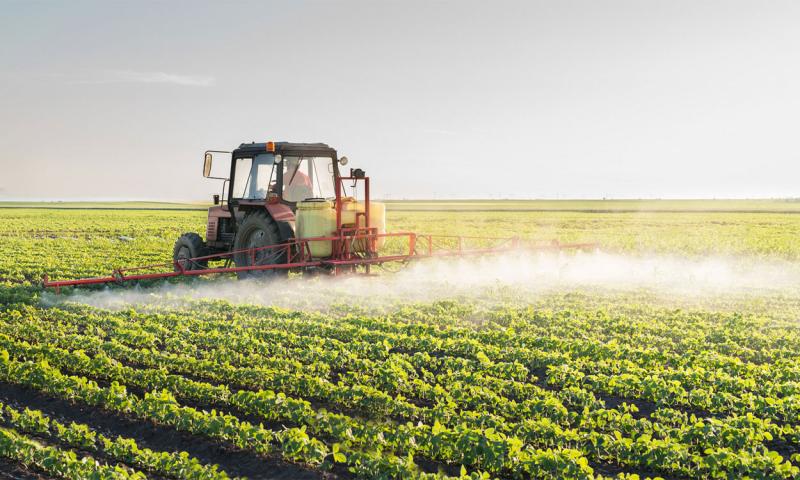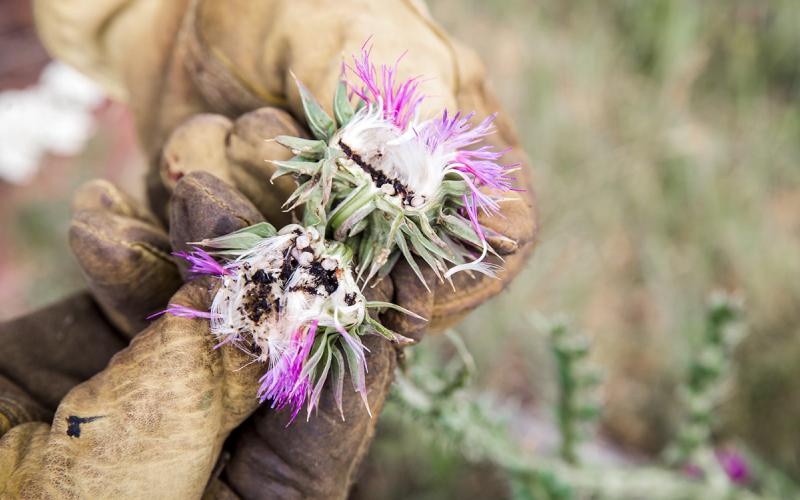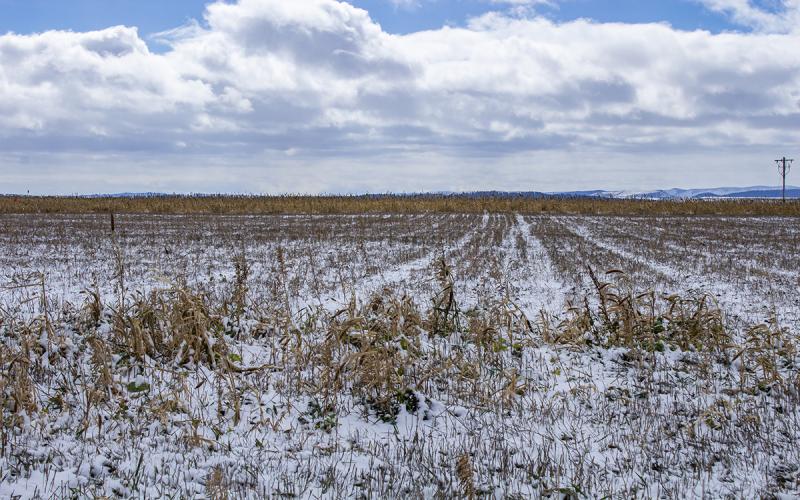
Postemergence weed control is critical for crop production. Weeds growing with the crop have the potential to reduce yield. Controlling emerged weeds within a crop ensures that yield is not limited by in-season weed interference.
Application Timing: Weed Size
Postemergence herbicides should be applied when weeds are small, ideally 2 to 4 inches in height. While some herbicides are labeled to control 6-inch weeds, it is likely that there are much larger weeds in the field. If herbicides are applied at an early timing, a follow-up application may be necessary to control later emerging weeds. Large weeds that are not controlled by the herbicide will likely produce seeds, resulting in more weeds that will have to be controlled in the next growing season.
Contact Versus Systemic
There are two different types of postemergence herbicides, systemic and contact.
Systemic
Systemic herbicides move throughout the plant. When the herbicide droplet lands on the leaf, the herbicide is translocated to different parts of the plant. Spray nozzles that produce a coarse droplet should be utilized. Examples of systemic herbicides include: glyphosate (Roundup), mesotrione (Callisto), and auxin herbicides (2,4-D, dicamba, and others).
Contact
Contact herbicides do not move throughout the plant. When the herbicide droplet lands on the leaf, that is where the plant functions are inhibited. Spray coverage is critical for effective weed control with these herbicides. Spray nozzles that produce a medium/fine droplet should be utilized. Fifteen gallons per acre of spray solution should be the minimum output for these herbicides. Examples of contact herbicides include: glufosinate (Liberty), lactofen (Cobra), and bromoxynil (Buctril).
Environmental Conditions
Environmental conditions to consider before applying a postemergence herbicide include the following.
Light and Temperature
Some postemergence herbicide effectiveness will be dictated by light and temperature. Herbicides, such as glufosinate (Liberty) and lactofen (Cobra), are more effective under hot and humid conditions with high light. Conversely, these herbicides will provide poor control under cool and dark conditions. Postemergence herbicides do not perform well in cool conditions (approximately 50 degrees Fahrenheit or less). While this is usually not a problem for in-season applications, cool temperatures are common for preplant burndown applications.
Drought
Most herbicides will provide reduced control under hot and dry conditions. Similar to crops, weeds are stressed under drought conditions and the processes that herbicides inhibit are not functioning as normal. Spray additives (for example, surfactants and water conditioners) under hot and dry conditions may improve control.
Rainfast Period
The rainfast period is how long the postemergence herbicide needs to remain on the plant before a rain event. The rainfast period changes from herbicide to herbicide, but a good rule of thumb is 4 to 6 hours after application.
Wind
Postemergence herbicides should be applied when wind speeds are approximately 5 to 10 miles per hour. Spraying in windy conditions can move the herbicide droplet away from the intended weed target on to off-target crops and plants.
Temperature Inversion
A temperature inversion is where a layer of warm air is trapped between cooler air that is higher in the atmosphere, and dense, cooler air that is close to the surface of the earth because of less sunlight intensity. When an herbicide is applied during a temperature inversion, the warm air can trap herbicide droplets above the cool air, and lateral wind can transport the herbicide away from the targeted deposition site. These conditions are usually present before sunrise and after sunset. The South Dakota State University Mesonet provides an online spray tool to determine if an inversion or unfavorable wind conditions are present.
Herbicide Selection
Ideally, postemergence herbicides from different groups (or modes of action) should be applied. Applying two different herbicides increases the spectrum of weed control. Some postemergence herbicides will provide good broadleaf or grass weed control, and including both herbicides ensures that all weed species will be controlled. Different combinations of postemergence herbicides may have to be utilized across fields depending on the weed species present. Additionally, applying two different herbicides reduces the selection pressure on herbicide-resistant weeds. Many postemergence herbicides are still effective for controlling weeds resistant to acetolactate synthase (for example, Accent, Harmony, Pursuit, and others), inhibiting herbicides and glyphosate (such as Roundup). However, if only a single herbicide is applied, this could select for weeds resistant to the herbicide applied. When applying both unique herbicides, the chance of selecting for a weed resistant to the individual herbicide is reduced.
Residual Herbicides
The addition of a residual herbicide (such as preemergence) to a postemergence herbicide application will control later germinating weeds. While later germinating weeds do not always result in a direct yield loss, controlling these weeds will improve harvest efficiency and reduce the amount seeds returning to the soil that will have to be controlled in subsequent growing seasons. Try to select a different herbicide that was applied preemergence (which means pre- or at planting) if possible, to reduce selection pressure on herbicide-resistant weeds.


